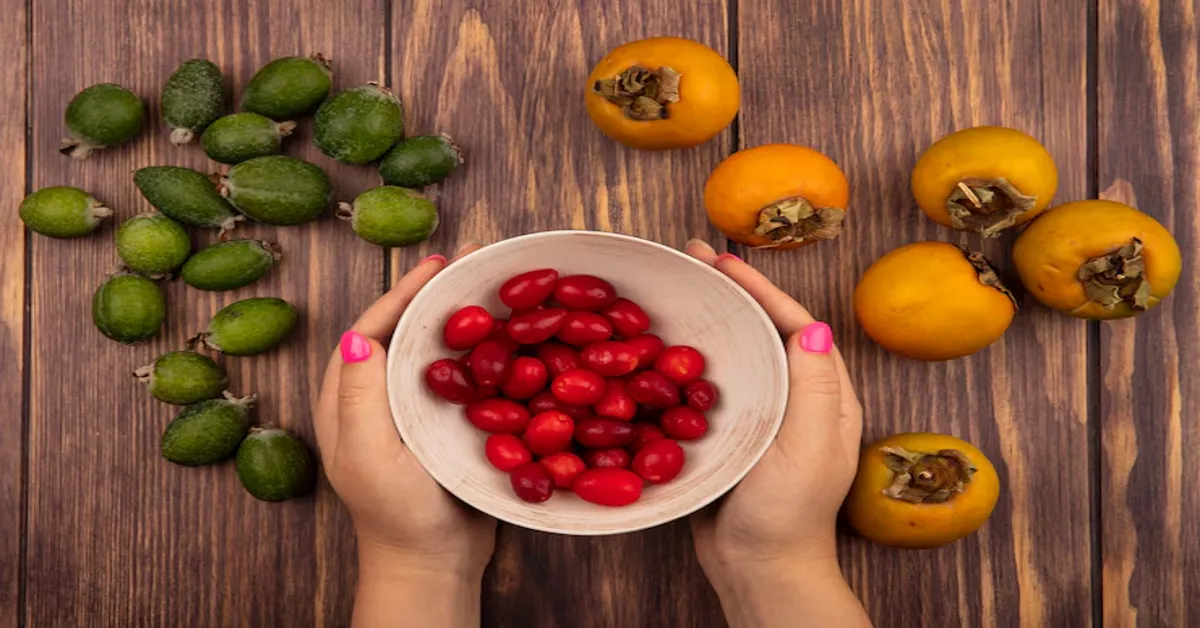In a world captivated by superfoods and ancient remedies rebranded for contemporary lifestyles, one fruit quietly makes its way back into kitchens, herbal pharmacies, and cultural memory: the žižole. Known more widely in English as the jujube, this small, wrinkled fruit is far more than a curiosity at farmer’s markets or a traditional ingredient in Eastern medicine. It is a botanical time capsule, packed with nutrients, stories, and a resurgence in relevance.
For centuries, žižole have bridged the gap between food and medicine, sustenance and ritual, east and west. Today, as consumers turn to natural remedies, plant-based nutrition, and climate-resilient crops, the žižole is experiencing a quiet but meaningful revival.
This article offers a comprehensive exploration of the žižole — its history, cultivation, nutritional profile, medicinal uses, and evolving place in modern wellness culture. Written in a style reflecting the analytical depth of The New York Times, this report aims to inform and intrigue both the culinary adventurer and the wellness seeker.
What Are Žižole?
The žižole (pronounced zhee-zho-leh) is the fruit of the Ziziphus jujuba tree, a deciduous species in the buckthorn family (Rhamnaceae). Native to China, the jujube has been cultivated for over 4,000 years, spreading westward through Asia, the Middle East, the Mediterranean, and parts of Eastern Europe — where it gained names like žižole in Slavic regions.
Visually, the fruit resembles a small date or olive. It starts green, ripens into a deep reddish-brown, and shrivels with time, developing a chewy, sweet texture that has earned it the nickname “red date.” But unlike a date, žižole have their own flavor — mildly tart, with apple-like notes when fresh and a honeyed richness when dried.
Botanical and Agricultural Overview
The Ziziphus jujuba tree thrives in arid and semi-arid climates, making it a potential climate-resilient crop in regions facing water scarcity. Hardy and drought-tolerant, it is grown not just for its fruit but also for soil stabilization and windbreaks.
Key Agricultural Characteristics:
- Height: 5–12 meters
- Leaves: Glossy, deciduous, with fine teeth
- Fruit maturity: Late summer to early fall
- Pollination: Some cultivars are self-pollinating; others benefit from cross-pollination
- Pests: Generally resistant, making it attractive to organic farmers
Its adaptability has led to increased interest in planting žižole in Southern Europe, North Africa, and even parts of the U.S. Southwest, where similar climate conditions exist.
Žižole Through History and Culture
In Traditional Chinese Medicine (TCM)
In Chinese culture, jujube (da zao) is considered one of the “Five Sacred Fruits” and has been used in TCM for centuries to:
- Boost qi (life energy)
- Strengthen the spleen and stomach
- Calm the spirit (shen)
- Improve sleep and reduce anxiety
It’s frequently found in herbal tonics, teas, and soups, particularly for postpartum recovery or fatigue.
In Mediterranean and Slavic Traditions
In parts of Croatia, Bosnia, and Slovenia, žižole are enjoyed both fresh and dried. They are also used to produce liqueurs, syrups, and preserves, sometimes infused with anise or lemon zest. In folk traditions, they were associated with longevity, winter sustenance, and natural sweetness before sugar became widespread.
Nutritional Profile: More Than Just a Sweet Treat
Žižole pack a complex nutritional punch, offering macronutrients, trace minerals, and phytonutrients that contribute to their growing reputation as a “superfruit.”
| Nutrient | Amount per 100g (dried) | Function |
|---|---|---|
| Calories | 280 | Energy support |
| Carbohydrates | 70g | Natural sugars, energy |
| Fiber | 6g | Digestive health |
| Vitamin C | 69mg | Immune support |
| Potassium | 530mg | Heart health, nerve function |
| Iron | 1.9mg | Blood oxygen transport |
| Flavonoids | ~ | Antioxidants, anti-inflammatory |
Notably, the high vitamin C content (often higher than citrus fruits) and polyphenol antioxidants contribute to the fruit’s reputation for boosting immunity and combating oxidative stress.
Health Benefits: Modern Science Meets Ancient Wisdom
While many traditional uses of žižole are rooted in anecdotal or ethnobotanical history, modern research has begun to validate some of these claims.
1. Sleep and Anxiety Relief
Studies suggest that compounds in žižole — especially saponins and flavonoids — interact with GABA receptors in the brain, offering mild sedative and anxiolytic effects. This supports the traditional use of žižole tea as a nighttime beverage.
2. Immune Function and Anti-Inflammation
Due to their high antioxidant content, particularly vitamin C, flavonoids, and triterpenic acids, žižole help modulate immune responses and reduce inflammation. Some in-vitro studies show cytokine regulation, important in autoimmune and infectious diseases.
3. Digestive and Gut Health
The fiber content and presence of bioactive polysaccharides in žižole support the growth of beneficial gut bacteria, possibly contributing to improved digestion and gastrointestinal immunity.
4. Anti-Cancer Potential
Preliminary lab research has shown that certain extracts from žižole may induce apoptosis in cancer cells, particularly in leukemia and colon cancer models. However, clinical studies in humans remain limited.
5. Cardiovascular Health
The potassium in žižole aids in regulating blood pressure, while its antioxidants help reduce LDL oxidation, a major contributor to atherosclerosis.
Culinary Uses: Tradition and Innovation
Fresh Žižole
When consumed fresh, the texture is crisp and reminiscent of an apple, with a mildly tangy flavor. Fresh žižole can be:
- Eaten raw as a snack
- Sliced into fruit salads
- Poached with spices like cinnamon or cardamom
Dried Žižole
More commonly, the fruit is dried — naturally or in dehydrators — enhancing its sweetness. It can be:
- Steeped in tea
- Added to porridges or granola
- Used in baking as a date substitute
- Mixed with nuts for an energy-dense snack
Preserved and Fermented Forms
- Žižole Liqueur (Rakija/Brandy): Popular in Croatian and Balkan regions
- Syrups and Jams: For spreading or drizzling over yogurt
- Fermented žižole vinegar: A recent innovation in health food circles
Žižole in Modern Wellness Culture
As natural remedies gain traction in mainstream health circles, žižole are increasingly featured in:
- Functional food products like energy bars, herbal tonics, and nootropic teas
- Adaptogenic formulas that combine Eastern herbs with Western branding
- Vegan and paleo snacks, thanks to their nutrient density and natural sweetness
Wellness influencers and health brands are marketing žižole as an immune booster, natural anti-stress agent, and even a beauty fruit due to its effects on skin elasticity and collagen support.
Sustainability and Climate Adaptation
As global agriculture faces climate volatility, crops like žižole offer new hope. The Ziziphus tree requires little water, grows in marginal soils, and resists pests — making it an excellent candidate for regenerative agriculture projects and dryland farming.
Furthermore, the entire tree has value:
- Leaves can be used for animal fodder
- Wood is durable and termite-resistant
- Seeds yield oils used in cosmetics and traditional medicine
Challenges to Widespread Adoption
Despite its benefits, žižole faces hurdles:
- Limited consumer awareness in Western markets
- Short fresh shelf life, making dried or processed forms more viable
- Inconsistent naming: jujube, red date, Indian plum, Chinese date — all refer to the same fruit
- Need for more clinical trials to validate traditional claims
Nonetheless, the increasing visibility of žižole in specialty food stores, herbal apothecaries, and health blogs suggests the beginnings of a broader cultural revival.
Conclusion: A Fruit for the Future
Žižole is more than a nostalgic memory in Mediterranean gardens or a staple of Chinese medicine cabinets. It is a living link between tradition and innovation, between health and sustainability. As consumers look for nutrient-dense, climate-resilient, and culturally rich foods, žižole may very well take its place as a 21st-century superfruit — not because it is new, but because we are finally ready to see what it has always offered.
In a food system searching for meaning and functionality, žižole provides both. It nourishes, it heals, and — if given the attention it deserves — it could reshape how we think about the fruits of our past and their place in our future.
FAQS
1. What are žižole, and are they the same as jujube fruit?
Answer:
Yes, žižole is the local name for the jujube fruit, also known as Ziziphus jujuba. It’s a small, sweet, date-like fruit traditionally grown in parts of Asia, the Mediterranean, and Eastern Europe.
2. What are the health benefits of eating žižole?
Žižole are rich in vitamin C, fiber, antioxidants, and minerals like potassium. They support immune health, digestion, sleep quality, and may have anti-inflammatory and anti-anxiety properties.
3. How can I eat žižole — fresh or dried?
Both! Fresh žižole are crisp like apples, while dried ones are chewy and sweet like dates. They can be eaten raw, brewed into tea, added to cereals, or used in traditional jams and liqueurs.
4. Are žižole safe for everyone, including children and pregnant women?
Generally, yes. They are safe as a natural food and have been consumed for centuries. However, as with any supplement or herbal remedy, pregnant women should consult a healthcare provider before consuming large amounts, especially in medicinal form.
5. Where can I buy žižole or jujube products?
Žižole can be found in specialty health stores, Asian and Mediterranean markets, or online in forms like dried fruit, tea, powder, and even herbal supplements.











